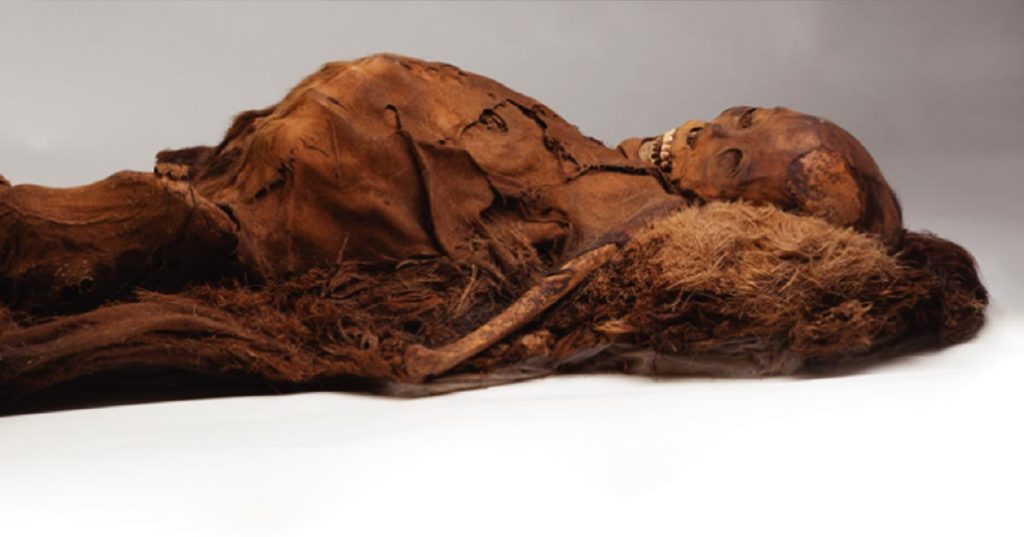Inuit Mummies Had Clogged Arteries Despite High Omega-3s

Inuit Mummies Had Clogged Arteries Despite High Omega-3s
The mummified Inuit scans of Greenland from the 16th century show that, despite a diet rich in omega-3 fatty acids, the ancient hunters suffered from clogged-up arteries.
Atherosclerosis — the build-up of fat, cholesterol, and calcium plaques in one’s arteries — is a leading cause of death in the wealthy countries of the world today.
Although often seen as a symptom of modern lifestyles, evidence of the disease in human remains dating back to around 4,000 BC has been identified.
None of these examples, however, enjoyed a diet rich in omega-3 fatty acids, which was suggested to help protect against plaque build-up.
Four incredibly well preserved Inuit, who had taken a marine-based omega-3-rich diet, were turned to doctors to test how fatties acid enhanced their arterial health.

The findings suggest that diets rich in omega-3 may not guarantee against plaque buildup — however, the researchers caution that it is unclear what other factors were at play.
Scans of mummified Inuits from 16th-century Greenland revealed that the ancient hunters suffered from clogged-up arteries despite a diet rich in omega-3 fatty acids
Cardiologist L. Samuel Wann of Ascension Healthcare in Milwaukee and colleagues studied four Inuit mummies taken from the collections of the Peabody Museum of Archaeology and Ethnology in Cambridge.

Preserved largely by the cold, the mummified individuals were found on the island of Uunartaq, off of the coast of Greenland, in 1929.
Based on their clothing and surrounding grave goods, archaeologists have concluded that the mummies were buried in the 1500s.
During their lives, the group would have lived in huts made from stone, whale bone and seal skin and would have hunted from kayaks with spears, bows and arrows.
Their prey would have included fish, birds, marine mammals and caribou — with this marine-based diet likely to have been rich in omega-3 fatty acids.
Based on their skeletal and dental features, the experts determined that the mummies included two men and two women between the ages of 18–30.
The researchers used a CT scanner to take detailed images of the mummies’ insides, which were then analysed by Dr Wann and his team of four other cardiologists and two radiologists with experience interpreting scans of mummified remains.
Three of the mummies were found to have so-called ‘calcified atheroma’ — an accumulation of plaques of fatty material in the arteries which appeared as high-density regions in the CT scans.
The buildups were seen to be similar to those in living humans with atherosclerosis — although in the mummy’s case, it was unclear if this condition led to their demise.

Atherosclerosis — the build-up of plaques of fat, cholesterol and calcium in one’s arteries — is a leading cause of death in the world’s wealthier countries. Pictured, a 3D reconstruction of one of the mummies’ abdomens. The arrow points out a calcified atherosclerotic plaque
While often seen as a product of modern lifestyles, evidence of atherosclerosis has been found in human remains dating back as far as around 4,000 BC. Pictured, a 2D reconstruction of one of the mummies’ abdomens. The arrow points out a calcified atherosclerotic plaque
Researchers turned to the four preserved Inuits, who would have eaten a marine-based, omega 3-rich diet, to see if such a lifestyle resulted in improved arterial health. Pictured, 2D (left) and 3D (right) reconstructions of one of the mummies’ chests. The arrows point out calcified atherosclerotic plaques
The findings suggest that such diets may not guarantee against plaque buildup — however, the researchers caution that it is unclear what other factors were at play.Pictured, 2D (left) and 3D (right) reconstructions of one of the mummies’ necks. The arrows point out calcified atherosclerotic plaques
‘This [study] presents evidence for the presence of calcified plaques in the mummified remains of 3 young Inuit individuals living 500 years ago,’ the researchers wrote in their paper.
This, they added, suggests ‘the presence of atherosclerosis despite [the mummies’] vigorous lifestyle and marine-based diet.’
However, the researchers cautioned that the complex nature of atherosclerosis makes it difficult to determining the exact impact of particular factors, such as the preventative effect of an omega-3-rich diet.
Other factors — like environmental smoke produced by the use of indoor fires — could have helped produce atherosclerosis in this ancient Inuit population.